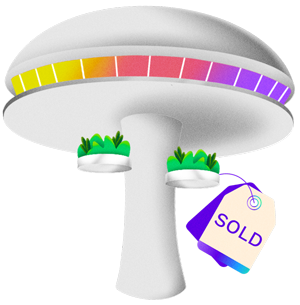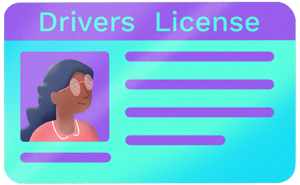Lesson 8
Trending topics: Tokenization and NFTs
Unique digital assets

What is an NFT?

NFTs are non fungible tokens, which means that each token is unique and not interchangeable. This is in direct contrast with fungible tokens, like bitcoin, which are all worth the same and can be interchanged.
A good example of a non-fungible asset is a house. You see, each house is unique—it has a unique location, size, amenities, etc. You can’t just swap one house for another and expect it to be the same.
NFTs take things one step further by the tokenizing an asset, like the house in our example. Tokenization is a broad term that describes the process of creating a digital token that represents another asset.
You may have also heard of “minting” in relation to NFTs. This is the act of creating a new NFT and publishing it to the blockchain, where it can be sold on an NFT marketplace.
Now that we know what an NFT is, let’s take a look at the brief history of this space.
The History of NFTs
The first big NFT craze came with the rise of CryptoKitties in late 2017.
CryptoKitties is an Ethereum-based game that allows players to breed, trade, and collect virtual cats. Each cat is an NFT, which means that each one is unique, with its own set of characteristics.
The popularity of CryptoKitties even led to the Ethereum network becoming congested, with transactions taking days to confirm, as well as gas prices becoming exorbitantly high.
This craze also led to widespread interest in the underlying technology. Projects started popping up that tokenized all sorts of assets, from arthouse digital art to in-game items.
Fast forward to 2022, and the NFT space has reached mainstream popularity. Celebrities are getting in on the action, major corporations are minting their own NFTs, and the prices of some assets have reached astronomical levels.
Functional NFTs – use cases
There’s more to NFTs than just cool pieces of digital art. In fact, NFTs can be used for a variety of purposes beyond art and collectibles. Let’s take a look at some potential use cases for NFTs.
Real estate
NFTs can be used to prove ownership, transfer deeds, fractionalize ownership, and make the buying/selling process more transparent.

Identity verification
NFTs can be used as birth certificates, passports, driver’s licenses, and more. This would help to reduce fraud and make it easier to verify someone’s identity.

Academic credentials
NFTs can be used to represent academic credentials like degrees and transcripts. In fact, it wouldn’t be a surprise for paper certificates to become a thing of the past, especially as NFTs are immutable and easy to store.

Receipts
NFTs can be used to show that you paid for something, giving a unique identifier for that payment. One example of this could be for carbon credits. Tokenized carbon credits can help prove that someone paid to support the environment, and that no one is double dipping on that payment.
